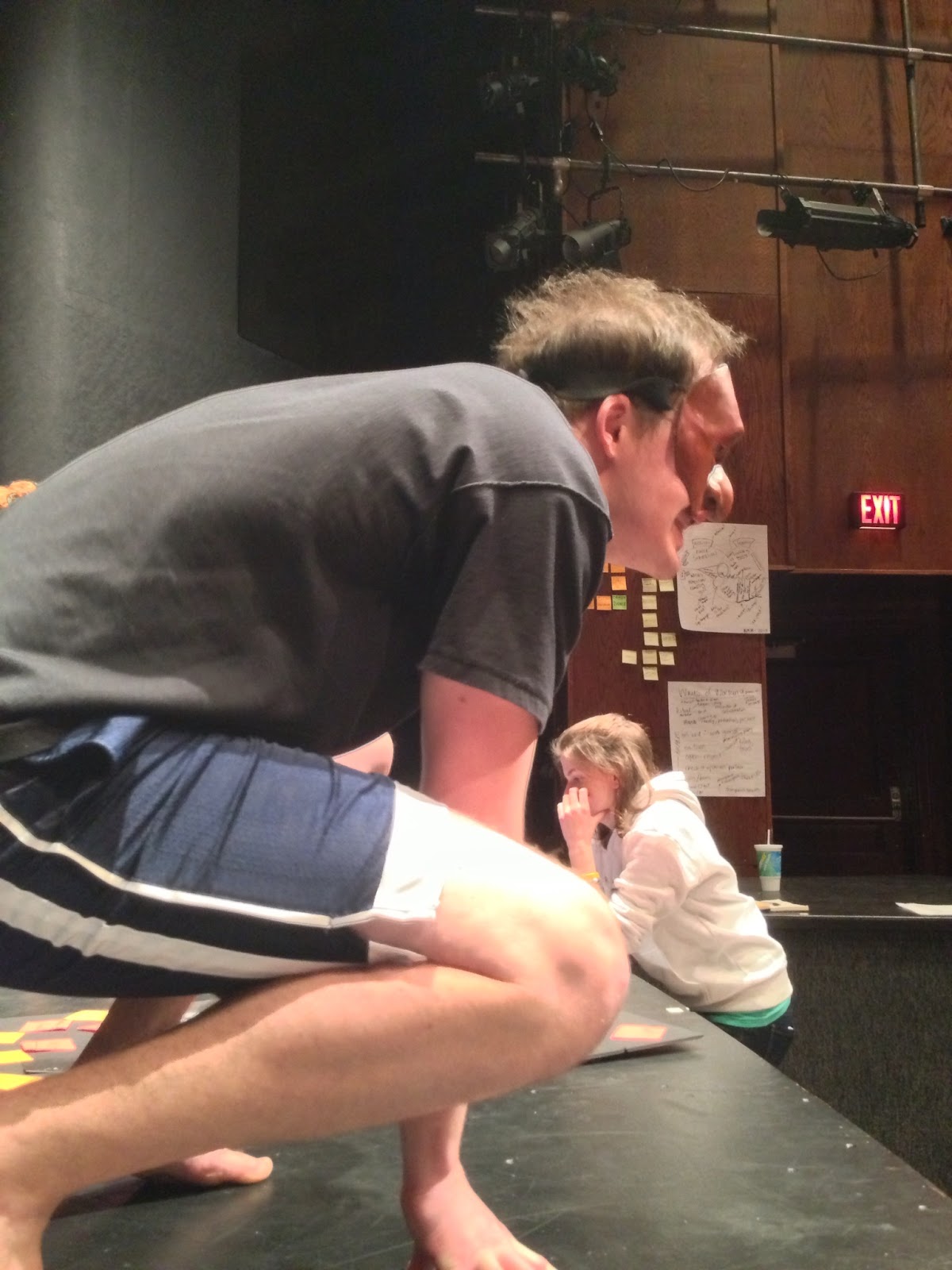"It is a tricky point in our process where I fear many “ohshit” moments because we are getting closer to the product, the mountain. Howdo we stay true to our process at this point and let that conversation bedirectly reflected in how we rehearse? How do I acknowledge the fact thatactors will go further into the process as characters now and I will zoom outfurther as a director? How do I do this without losing the play? How do I dothis without feeling our very horizonal/consensus-based process turn hierarchical?Age old questions.
Some possible solutions:
1. Continuing to get more specific/articulate by addingcompositional elements: For example, tonight we witnessed four minute grouppresentations that all centered around “the heart of the matter” (whatever thatmeant for the individuals that had gravitated toward those partners). Onceseeing these, we had a much better understanding of what in our story was past,present, and future. Now, we can take those moments and sculpt them further byasking the groups to work again in a specific area of the space, add entrancesand exits, include a song, unison laughter, etc. and then instead of themfeeling like we are all of a sudden “blocking a play,” my hope is that theywill feel ownership of the material and their character’s point of view that wecan shape it together little by little. Similar to blocking, but not the samein my mind.
2. Calling out percentages: It’s important to know how muchof our mind is in character point of view vs. thinking as a playwright. Thisway we distinguish between the two kinds of conversation for ourselves and as agroup.
3. Acknowledging phases of convergence vs. phases ofdivergence: There are times in a devised process when we are out being huntersand gatherers of new ideas to put in our pot. I think of this divergence as anoutward, opened arm kind of energy. We are creating and accumulating newmaterial. Titling new vocabulary and putting it on post-it notes. Thenconversely there are times when we are bringing all of these ideas together. Ithink of this as a funneling, creating a path to bring things onto. Differentthan a pot full of stuff. Converging: Connecting ideas, connecting post-itnotes. Leaving some things behind. Sometimes this second phase feels more challengingas it begs for more decisions and letting go. We wax and wane between these twophases in order to moving forward. I will call this out at the top of a week ora rehearsal. We could even (in order to physicalize this understanding) stepinto a circle together vs. turning our backs and stepping outside of thecircle.
 Overall, I don’t want to force my ideas, rather I want topresent a game which by being played can teach us all what wants to happennext. In a physical-based, momentum driven way can lead us into a popcornbrainstorm of “What if’s?” that we then use to take us into the same game witha new layer or onto a new island that we can discover, explore, and go deeperinto the gold of. This group has remained curious, open, listening, and dedicatedto their character’s and the overall play – so it truly feels like anything can happen!"
Overall, I don’t want to force my ideas, rather I want topresent a game which by being played can teach us all what wants to happennext. In a physical-based, momentum driven way can lead us into a popcornbrainstorm of “What if’s?” that we then use to take us into the same game witha new layer or onto a new island that we can discover, explore, and go deeperinto the gold of. This group has remained curious, open, listening, and dedicatedto their character’s and the overall play – so it truly feels like anything can happen!"-Kali Quinn
Director



















































